Template for Notice of Termination of Employment Letter
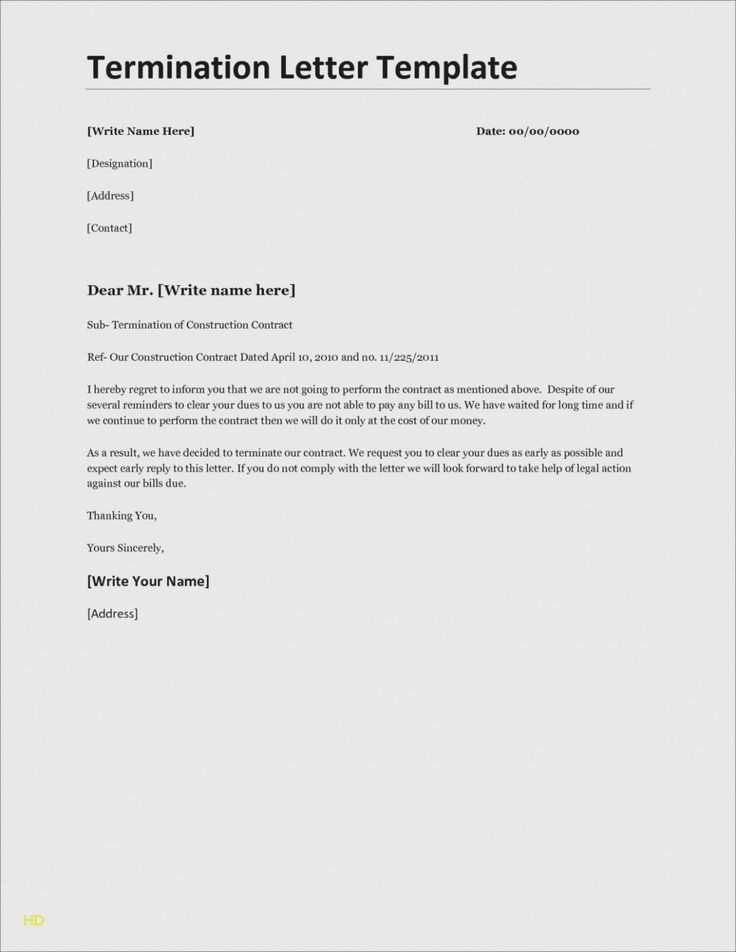
When it becomes necessary to end a working relationship, it’s crucial to communicate the decision clearly and professionally. This ensures the process is transparent, respectful, and legally compliant. A well-structured document helps both parties understand the terms and expectations moving forward, providing clarity in what can be a sensitive situation.
Key Elements to Include
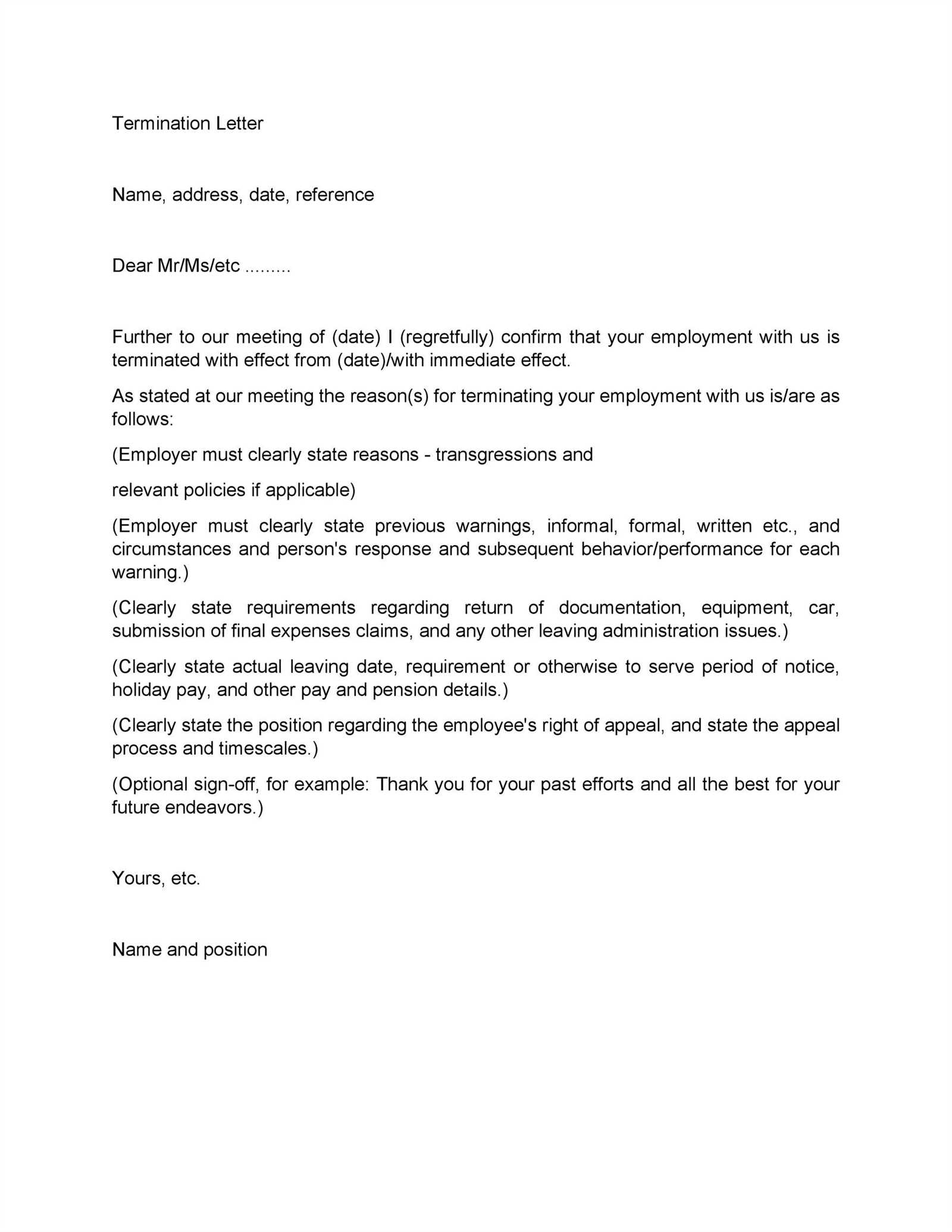
There are a few critical components that must be present in any formal communication regarding the end of a professional arrangement:
- Clear Statement of Intent: Begin with a direct declaration of the decision, leaving no room for misunderstanding.
- Reason for the Decision: Offering a concise explanation can help the recipient understand the rationale behind the action.
- Details of the Transition: Outline any relevant information regarding the final working days, outstanding tasks, and any severance or benefits due.
- Return of Company Property: Include instructions regarding the return of materials, equipment, or documents.
- Contact Information: Ensure the departing individual has a clear point of contact for any follow-up questions or assistance.
Common Mistakes to Avoid
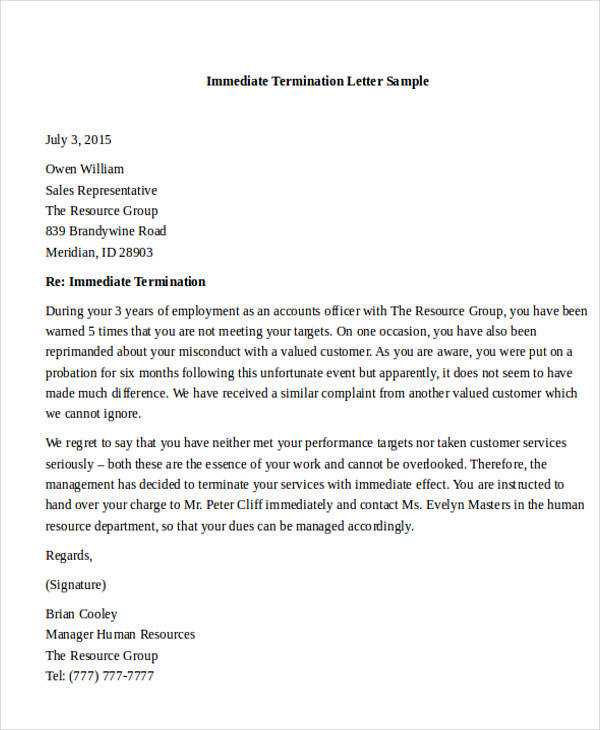
Even the most well-intended communication can falter if key details are omitted or poorly phrased. Here are some common pitfalls:
- Failing to use polite yet firm language that maintains respect for the individual while clearly conveying the decision.
- Providing inadequate notice or leaving essential logistics unclear, such as final day procedures or compensation details.
- Not confirming the receipt of the communication or providing an opportunity for the recipient to ask questions.
Legal and Ethical Considerations
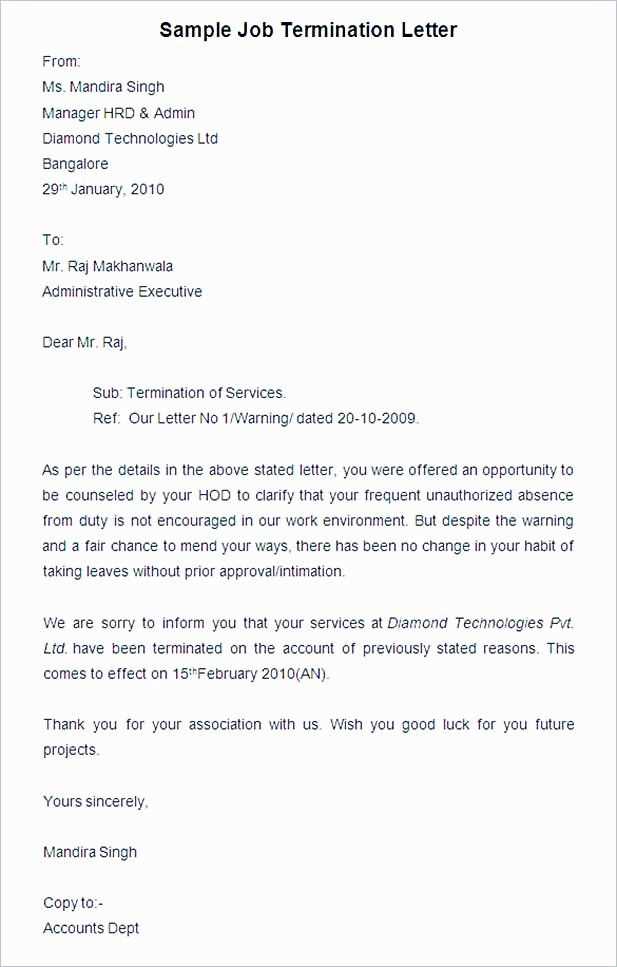
When writing a formal communication regarding the cessation of a working relationship, it is vital to adhere to legal guidelines and company policies. Ensure that the document:
- Complies with labor laws related to notice periods, compensation, and benefits.
- Is free from discriminatory language or tone that could lead to potential legal disputes.
- Is signed and documented appropriately, providing a record for both parties involved.
Alternative Approaches to Communicating the Decision
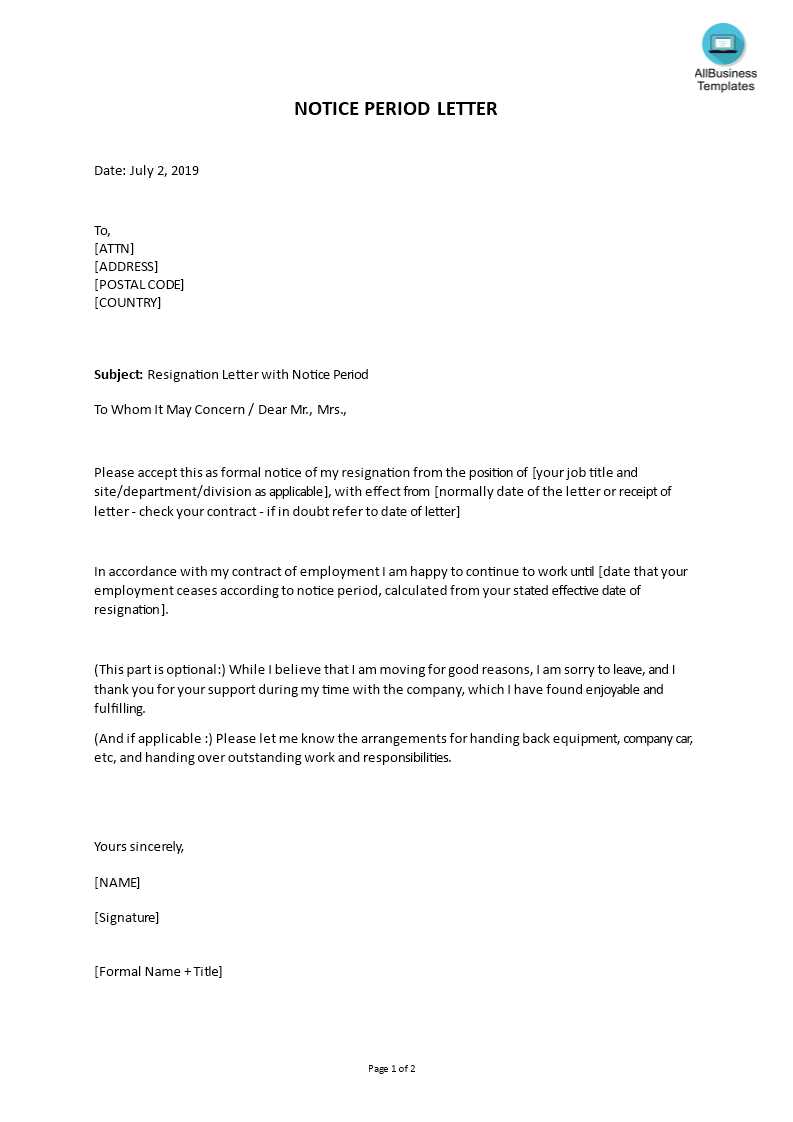
While a formal written document is often necessary, there are alternative methods that can also be employed, depending on the situation:
- Face-to-Face Conversation: In some cases, especially for long-term or high-level employees, an in-person discussion may be the most respectful and effective way to communicate the news.
- Follow-Up Email: After the initial conversation, it’s often wise to send a follow-up message to confirm the details in writing, ensuring there is a record of the communication.
- Phone Call: For remote employees, a phone call may be the most appropriate first step, followed by a written confirmation.
In conclusion, crafting a professional document for ending a work arrangement requires careful thought, clarity, and respect for both the individual and legal obligations. Following best practices ensures a smoother transition and helps maintain a positive professional relationship, even in challenging situations.
Crafting a Professional Communication for Ending a Work Relationship
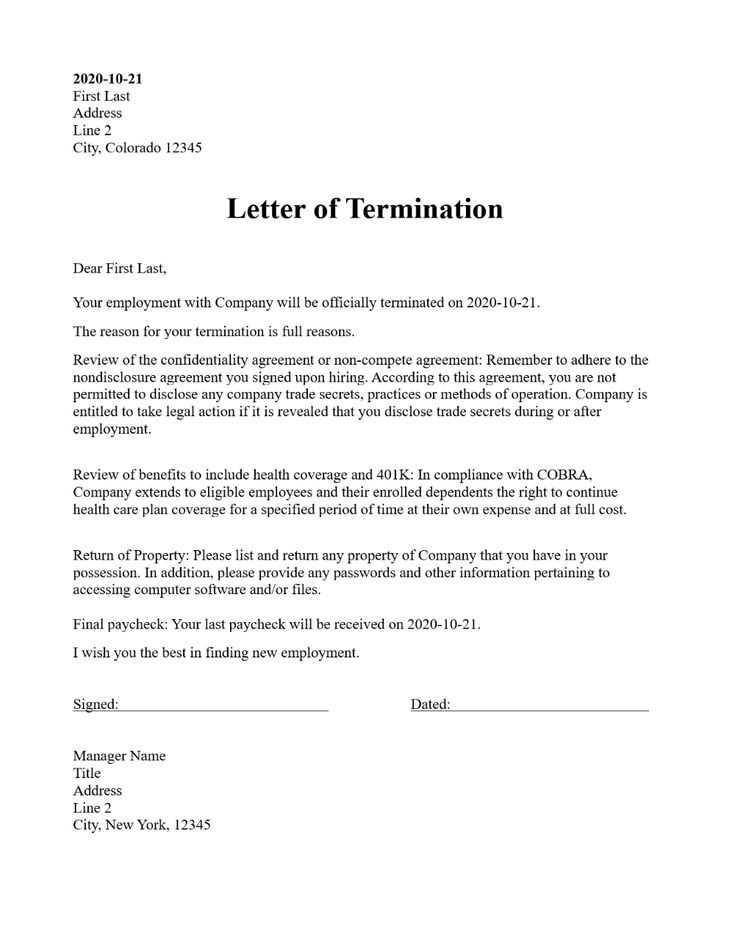
Ending a professional relationship requires a clear and respectful message that outlines all necessary details. A well-written document helps both the employer and the employee understand the terms and expectations for the transition. It’s important to ensure the process is carried out with professionalism to maintain respect and avoid any confusion or legal issues.
One of the key aspects of an effective communication is its clarity and transparency. Both parties should be fully aware of the reasons for the decision, the logistics of the transition, and any follow-up actions required. A comprehensive and well-organized approach reduces the risk of misunderstandings and ensures that all obligations are met on both sides.
Several important components should be included in the document. These include a clear statement of the decision, the reason behind it, relevant details about the final working day, and instructions for returning company property. Additionally, it’s essential to mention any compensation or benefits owed and provide contact information for future queries.
While creating this document, it’s crucial to avoid common errors, such as vague wording, leaving out important details, or failing to address the legal and logistical aspects. Inaccuracies in the content or tone can lead to confusion, disputes, or even legal complications. Ensuring the language is professional and clear will help mitigate these issues.
There are several legal factors to consider when drafting a document related to the end of a work relationship. Employers must adhere to relevant labor laws regarding notice periods, severance, and other employee rights. Additionally, the document must avoid any discriminatory language and comply with company policies and regulations. Maintaining a clear record of the communication is essential for legal purposes.
The way the message is communicated is equally important. In-person conversations are often the most respectful way to deliver such news, especially for long-term employees. However, for practical reasons, a follow-up email or phone call may also be appropriate to ensure all details are clearly communicated. The method of delivery should align with the company’s culture and the nature of the employee’s position.
Finally, while formal documentation is often necessary, alternative methods for conveying the decision can also be used depending on the situation. In some cases, a phone call followed by an email may suffice. For remote employees, video calls or written notifications may be more appropriate. Regardless of the method, it is essential that the message is clear and professional.